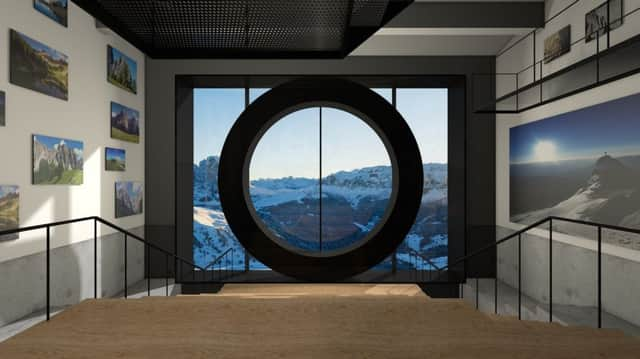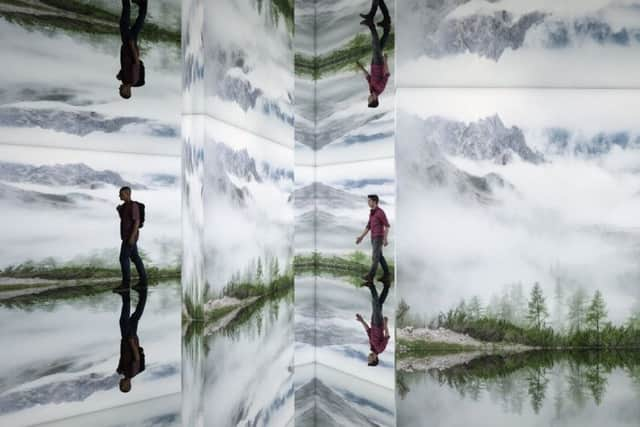Why Scotland should celebrate high culture with a museum of the mountains


Not that skiers in this neck of the Dolomites have previously been short of high-altitude culture. Incredibly, Lumen is the second significant cultural institution to open at the top of Kronplatz; also on the summit plateau is the Messner Mountain Museum Corones, one of six museums of mountain culture established by the Italian mountaineer Reinhold Messner. This one opened in July 2015 and it inhabits a stunning building, designed by Zaha Hadid, which looks like a spaceship that’s just crashed into a pile of rubble. In the words of its founder, it aims to “present the development of modern mountaineering” and “shed light on alpinism with the help of relics, thoughts and works of art.”
Such shrines to mountain-going history are to be found the world over. If you’re in Vail, for example, you can check out the Colorado Snowsports Museum. Off to Chamonix? Then why not swing by the Musée Alpin? A few years ago I was in Steamboat Springs in northern Colorado. It’s a small, down-home place with a population of just 12,965 (so about the same size as Helensburgh), and, although it’s in the same state as such glitzy resorts as Vail and Aspen, it’s stuck out on its own in the relatively remote Yampa Valley, so the vibe is much more rancher than investment banker. (You can still buy cowboy boots and hats in the town’s main clothing store, FM Light & Sons.)
Advertisement
Hide AdAdvertisement
Hide AdIn spite of its size, however, Steamboat takes its snow-sliding history seriously. Steamboaters are rightly proud of the fact that they’ve sent more athletes to the Winter Olympics than any other town in North America – the number currently stands at 98 – and they make a big deal of their skiing heritage. When I was there, a whole section of the Tread of Pioneers Museum, located in an old clapboard house in Oak Street, was dedicated to the town’s snowsports achievements, and the museum has since established a permanent “Olympian Tribute Display” in the gondola building at the ski resort.


Meanwhile, back in Scotland, in spite of the fact that our national tourist agency relies heavily on our mountain scenery as a means of attracting visitors, and in spite of the fact that we have a hugely rich and diverse mountain culture of our own, we still don’t seem to be able to muster a single museum devoted to it. A tourist could spend weeks driving around the country marvelling at our mountains and stopping off at mountain towns like Aviemore and Fort William along the way, without once discovering even a hint that, over the past couple of centuries, all sorts of significant climbing and skiing dramas have been played out amongst our #Instagrammable peaks and crags.
It’s not as if the material to create such a museum doesn’t exist. The Scottish Mountaineering Club has a considerable archive of books and photographs, held in the Special Collections Department of Strathclyde University Library, and then there’s Mick Tighe’s Scottish Mountain Heritage Collection, currently housed in a barn next to his house in Glen Roy, near Fort William, which contains all kinds of artefacts and memorabilia. Highlights include one of Hamish MacInnes’s revolutionary all-metal ice axes, an antique altimeter that belonged to the so-called father of Scottish mountaineering, Harold Raeburn, and more sets of antique skis than you could shake an antique ski pole at.
In 2009, Tighe got National Lottery Heritage Fund money to catalogue his collection and put it online, and he holds temporary exhibitions from time to time – he’s putting on a display on mountain fashion through the decades at next month’s Fort William Mountain Festival – but there are still no concrete plans to find the collection a permanent home.
If the Italians can justify putting two museums of mountain culture on a single mountaintop, and if the residents of a town the size of Steamboat Springs can organise not one but two permanent displays telling the story of their snowsports achievements, then surely a country of not far off five and a half million people – a country with mountains right at the heart of its national identity – could at least begin to discuss the idea of building one.
For more information about the Scottish Mountain Heritage Collection, visit www.smhc.co.uk